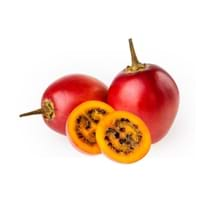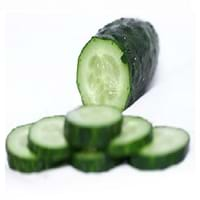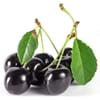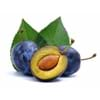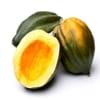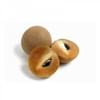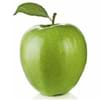Health Benefits
Cancer prevention, Improves eye vision, Prevents diabetes, Prevents high blood pressure
Arthritis treatment, Cancer prevention, Eczema treatment, Increases metabolic rate, Kidney stone treatment, Prevents constipation, Removes toxic metals, Treatment of alzheimer's disease
General Benefits
Cures inflamed tonsils, Helps in weight loss, Maintains healthy cholesterol level
Anti oxidant properties, Anti-inflammatory properties, Controls blood pressure, Digestive aid, Strengthens bones, Treatment of sore eyes
Skin Benefits
Anti-aging benefits, Protects skin from oxidative stress
Heals sunburn, Hydrates skin, Skin rejuvenation, Skin revitalization, Treatment of dark spots, Treatment of skin diseases
Hair Benefits
Protects hair
Promotes longer and healthier hair, Protects hair, Regulates hair growth, Shiny hair
Allergy Symptoms
Anaphylaxis, Coughing, Diarrhea, Eczema, Hives, Itching sensation in throat, Nausea, Skin Rashes, Runny nose, Sneezing, Swelling of mouth, tongue or lips, Vomiting, Wheezing
Breathing difficulty, Decrease in blood pressure, Diarrhea, Itching, Red rash, Runny nose, Sneezing, Vomiting, Watery eyes
Side Effects
Heart burn
Stressed heart, Irritation, Swelling, Swelling around mouth, Throat swelling, Tongue swelling, Strained blood vessels
Lactating Women
Yes
Not Available
Best Time to Eat
Along with meal, As a snack in the late afternoon, Don't consume at night and before bed, Don't eat after meal, Morning time (before lunch)
Along with meal, As a snack in the late afternoon, Eat the fresh ones, avoid mixing with any other foods, don't eat after meal., Strictly avoid empty stomach
Vitamin B5 (Pantothenic Acid)
Vitamin C (Ascorbic Acid)
Vitamin K (Phyllochinone)
Calories in Fresh Fruit with Peel
Not Available
Calories in Fresh Fruit without Peel
Calories in Frozen Form
Not Available
Not Available
Calories in Dried Form
Not Available
Calories in Canned Form
Not Available
Calories in Juice
Not Available
Calories in Jam
Not Available
Calories in Pie
Not Available
Type
Fruit vegetable
Fruit vegetable, Melon
Season
All seasons
Spring, Summer
Varieties
Tamarillo bold gold, Tamarillo red beau, Tamarillo tango and Tamarillo teds red
Armenian, English, Garden, Kirby, Lemon and Persian
Color
Orange, Red, Yellow
Dark green, Green
Inside Color
Creamy Yellow
White
Taste
Tangy, Tart
Juicy, Watery
Origin
South Africa
India
Soil Type
Sandy loam, Well-drained
Loam
Climatic Conditions
Rainfall, Warm
Warm
Facts about
- Up until 1967, tamarillos were referred to as tree tomatoes.
- The name tamarillo is derived from Maori word 'tama' which means leadership and rillo from spanish word 'amarillo' which means yellow.
- Outer waxy coating of cucumber can erase the pen writing.
- Pressing cucumber on roof of mouth for 30 sec will eliminate bad breath.
- It is made up of 96% water.
- English cucumber can grow longer than 2 feet.
Top Producer
New Zealand
China
Other Countries
Australia, Chile, Colombia, Malaysia, Peru, Philippines
Egypt, Indonesia, Iran, Japan, Russia, Spain, Turkey, Ukraine, United States of America
Top Importer
United States of America
France
Top Exporter
New Zealand
Spain
Botanical Name
Solanum betaceum
Cucumis sativus
Synonym
tree tomato, genus Cyphomandra, Cyphomandra
Not Available
Subkingdom
Tracheobionta
Tracheobionta
Division
Magnoliophyta
Magnoliophyta
Class
Magnoliopsida
Magnoliopsida
Subclass
Asteridae
Dillenhidae
Order
Solanales
Cucurbitales
Family
Solanaceae
Cucurbitaceae
Species
Solanum betaceum
C. sativus
Generic Group
Nightshade
Not Available
Difference Between Tamarillo and Cucumber
We might think that Tamarillo and Cucumber are similar with respect to nutritional value and health benefits. But the nutrient content of both fruits is different. Tamarillo and Cucumber Facts such as their taste, shape, color, and size are also distinct. The difference between Tamarillo and Cucumber is explained here.
The amount of calories in 100 gm of fresh Tamarillo and Cucumber with peel is Not Available and 15.00 kcal and the amount of calories without peel is 31.00 kcal and 12.00 kcal respectively. Thus, Tamarillo and Cucumber belong to Low Calorie Fruits and Low Calorie Fruits category.These fruits might or might not differ with respect to their scientific classification. The order of Tamarillo and Cucumber is Solanales and Cucurbitales respectively. Tamarillo belongs to Solanaceae family and Cucumber belongs to Cucurbitaceae family. Tamarillo belongs to Solanum genus of Solanum betaceum species and Cucumber belongs to Cucumis genus of C. sativus species. Beings plants, both fruits belong to Plantae Kingdom.
